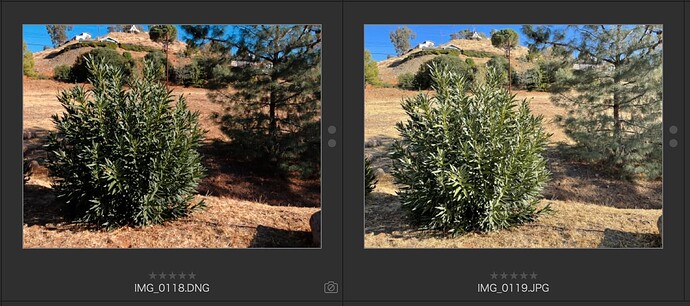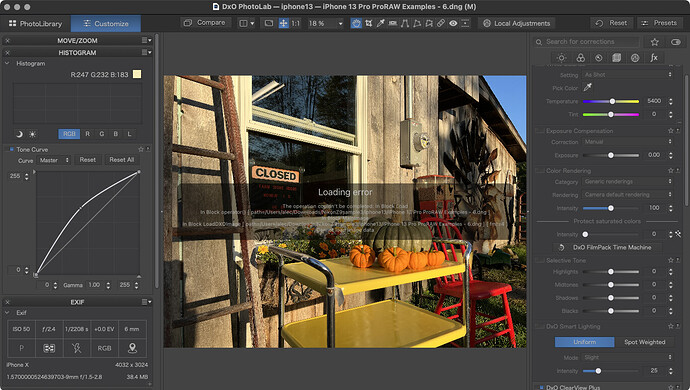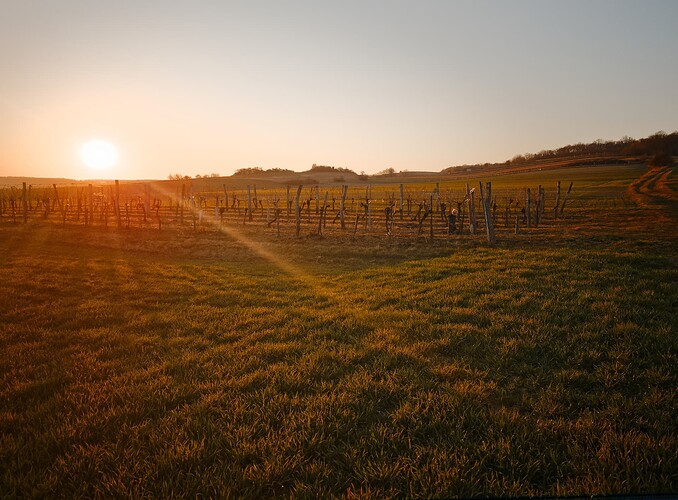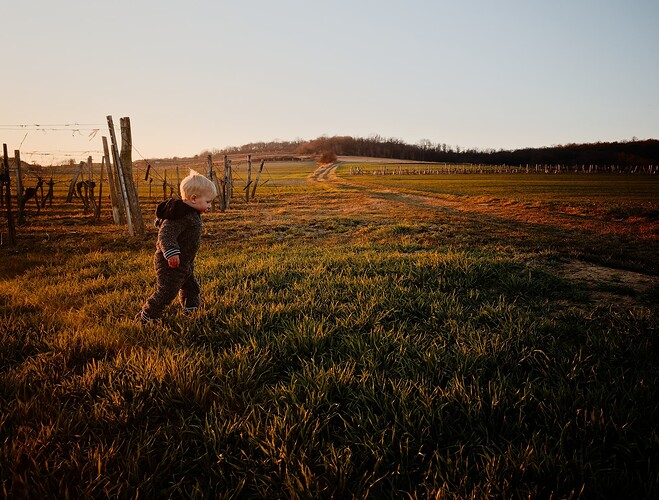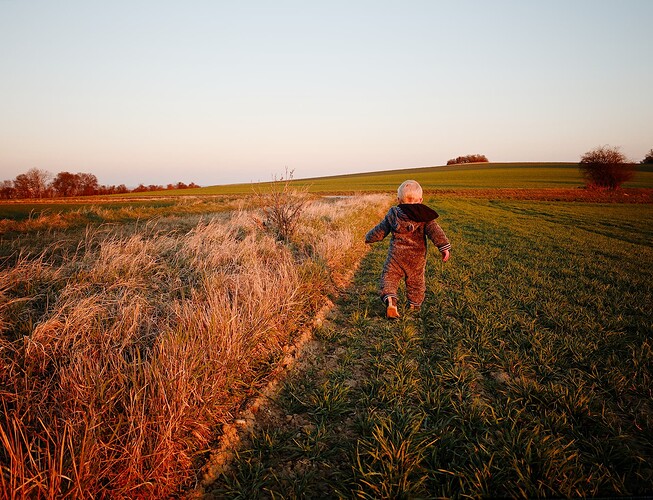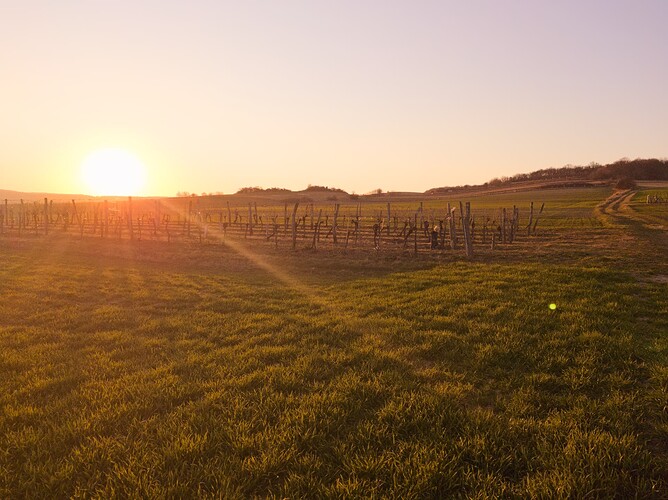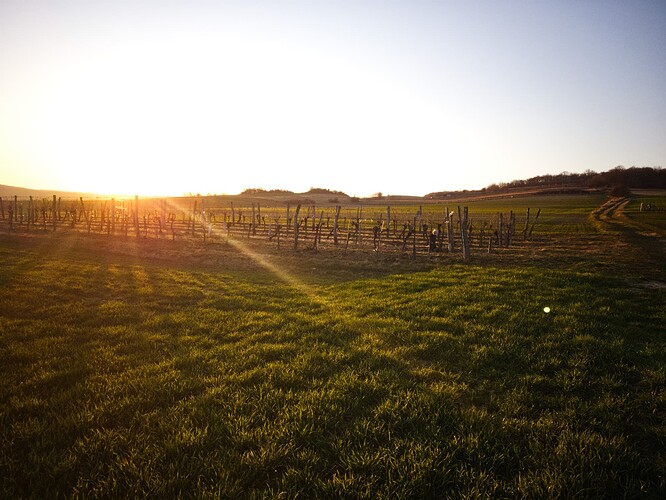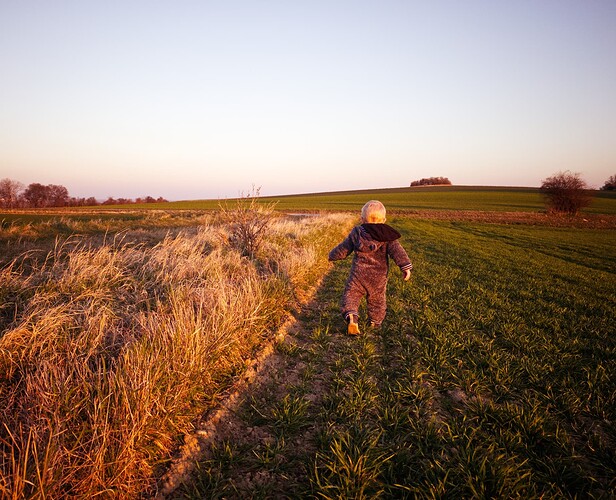Any updates on availability to process Raw, DNG files from Apple iPhones 12, 13 PRo, Pro Max?
I’ve had good luck changing the Camera Model Name with MetaImage with an iPhone 11 Pro Max on iOS 13.5.1.
I managed to download some iPhone 12 and iPhone 13 DNG. There is some good control of colour and light with the iPhone 12 files, but no Prime or DeepPrime. See below a retouched DNG vs Apple’s default processing. I’ve exaggerated the processing on the DNG to show the richer tones available.
The iPhone 13 RAW files give a loading error.
I haven’t tried iPhone 13 RAW files from third-parties like Moment or FilmicPro (FirstLight) as I don’t have the phone to create them. Perhaps someone else can do those tests.
Glad I have the iPhone 11 Pro Max and didn’t upgrade. Having DxO PhotoLab available for these RAW files makes it much more useful as a carry camera.
Here’s a relatively random picture of a rainbow at the main station in Bratislava on which I did my iPhone 11 tests, post-processing. Distortion, Lens Sharpness, DeepPrime, everything works:
It turns out though that one cannot crop too close to the edges or some green banding will show up which does not show up in the previews. Here’s my original export of that image:
In this case, the crop was right at the edge of the black bars, which are slanted as I used ViewPoint to correct perspective.
If you don’t mind what exactly did you change? I have a iPhone 13 pro max and simply changing 13 to 11 doesnt cut it. I sure possibly the lens settings? Thanks for any help
I have an iPhone SE mk2 and an iPad Mini. The DNGs produced by the third party apps, On1 and Halide, can’t be processed by DxO PureRaw. I tried running them through Adobe’s DNG Converter and it didn’t make any difference.
Gentlemen, please read the linked article. All the details about how to change the Camera Model with MetaImage and to what to change it are there. I did post here the results with other phones. In resumé, post changed the iPhone 11 offers near perfect compatibility, the iPhone 12 DNG can be worked with with some limitations, iPhone 13 DNG won’t open up at all, throw an error.
Pity, as iPhone DNG processed in PhotoLab can be awesome. From my iPhone 11 Pro Max:
Frankly the hurdles to jump through to edit iPhone DNG in PhotoLab 5 are a nuisance. Even when done right, one only has full DNG editing up until iPhone 11 Pro (partial up to iPhone 12 Pro) and file corruption is a constant issue. Is iPhone DNG editing in PhotoLab worth the trouble?
To help with the answer, I took these same pictures (well two of them for now) and developed them in first Iridient Developer 3.3.13 (last version for which I have a license, checked results against current demo with watermark, identical) and in Affinity Photo 1.10.4.
Here’s Iridient Developer first. Not my first attempt. After the first attempt fell flat (it’s been years since I used Iridient Developer regularly) I went back and tried to match the PhotoLab 5 originals that I liked. Here’s the best I could do, and with far more effort than in PhotoLab 5.
Okay but really nothing special. On the second one, that was the fourth attempt. Not at all sure it would be worth bothering with iPhone DNG for these results.
Here’s what I managed with Affinity Photo.
Better except for the sun in the image 13 which is completely blown out along with most of the sky.
In fairness to Affinity Photo, this is a single RAW developed file with touchups afterwards on the single layer. It would be possible to better in Affinity Photo by processing multiple exposure layers and RAW and then merging them.
Multi-layer RAW processing is so much more labour intensive than PhotoLab that I stuck to the single layer to make the comparison fair.
End result – iPhone DNG editing in PhotoLab 5 yields significantly better results with far less trouble. PhotoLab 5 is an excellent dedicated RAW processor (we knew that). On the other hand, DxO is harming their marketing and making existing customers very unhappy by arbitrarily and unfairly cutting photographers off from using their mobile phones
I believe it goes back to the debacle of the DxO One which destroyed the old DxO and embittered DxO owners to mobile phones and especially Apple. Now out of the game, DxO owners don’t want anyone to offer good mobile DNG processing, especially DxO. What I would say to this (I’m a DxO One owner) is that it’s not Apple’s fault that
- the DxO One was too heavy to hang safely off the end of an iPhone, especially with a case on
- the DxO One had its own very heavy battery and didn’t use the built in iPhone battery
- the DxO One used its own storage instead of storing its images and videos within the iPhone. Well, this one is partly Apple’s fault – iOS has never played all that well with others, particularly the file system.
All of these are serious inconveniences when using the DxO One. Had the original DxO One been lightweight (high quality plastic) and leveraged the iPhone battery) and less expensive as a consequence (no fine metal finishing, no expensive battery) it might have been a success in the day. It would be hard now to compete with computational photography but computational photography arrived a couple of years later.
But all those are bygones. For heaven’s sake, DxO give your paying photographers access to our mobile phone/iPhone DNG images!
As a DxO One owner and an iPhone 13 Pro owner I couldn’t agree more. I cringe every time I look at my iPhone 13 Pro photo’s when lighting is even remotely challenging as I know the hardware is generating better picture data than I see from the over processed images that the camera knocks out. Typical Apple these days, great hardware, poor software, which is why we want our RAW converter, DxO Photolab, to be able to handle iPhone raws fluently.
I was surprised and delighted with what I could do with my iPhone 11 Pro DNG images in the first post. It’s so frustrating that DxO makes it difficult/impossible to use PhotoLab on iPhone DNG.
Is there nobody with enough influence at DxO to get them to stop their post-DxO One debacle block on mobile phone photography?
Hi Alec,
I have now given up asking for smartphone DNG support, as have so many other things that are repeatedly asked for here, backed up with FR’s and asked for in beta phases.
Like you I have since used Affinity Photo to develop our P30 pro DNG’s, work with LUT’s and other tools and also use the live filters in AP.
This has been more time effective for me than writing posts about it. 
Have fun
Guenter
Impressive how many posts there are around ProRAW; I’m looking to get out of Capture One (cost as well as effort vs. output) and the DxO PhotoLab 5 treatment of my Fuji stills has been great, and it’s sooo nice to skip that import part and just use folders.
But then today I wanted to do some local adjustments (which I think DxO has just the best workflow) on an iPhone 13 Pro ProRAW image and… bummer. It worked in C1 though and my subscription is still running till August, so I’m kind-of “fine”.
What I don’t get: each year (and this one in particular if rumours hold) there’s real improvements to mobile photography and DxO just ignores it…
And yet DXOMARK (a previous sister company) only seems to test phones these days, two different extremes, neither useful? 
let’s all write an email to support.
it can’t be that the now very good cameras of the phones are not supported.
The iPhone 14pro in particular will be very good again in terms of camera technology.
and every photographer knows that the best camera is the one you have with you or at hand.
I just wrote a mail to the support that it was my last DXO product if the iPhone 14pro is not supported.
Let’s clear this up: “ProRAW” is NOT “raw”. The file format for “ProRAW” is essentially a TIFF (a flat “DNG” is basically a tiff) with a bunch of metadata about the computational processing -already done- on it by Apple. That said, the iPhone does have a truly raw format available, which is traditional, unprocessed (hence ‘raw’) data. You’ll need a third-party app like “ProCamera” to use it however.
TLDR: ProRaw IS NOT raw. It’s already been processed (although it offers more post-processing capabilities than jpg.)
et al. This isn’t a secret; it’s all over the net.
DxO does offer access to some iPhone raw files, but stopped at the iPhone X.
Photolab 5 dont open ProCamera DNG´s from my iPhone 11 Pro max.
DXO bring support for this Phones…
Fwiw - in Nov 2021 I managed to extract the following from the DxO Labs Support Team:
“The iPhone 12 Mini/Pro/Max are on our future longterm roadmap, the 13 has not been added, that is all the information I am able to provide, our apologies once again.”
I’ve been using DxO for years and really like features such as U-Points (which had their genesis in the venerable Nikon Capture NX and NX2) but find it increasingly frustrating being unable to use DxO 5 to process ProRAW images from the iPhone 13 Pro.
I don’t plan to upgrade to DxO Photolab 6 until ProRAW is supported.
For now I’ll continue using the ProCamera app to take RAW images, as these .DNG files are editable in DxO after changing the camera model metadata to “iPhone X”. Still a hassle, but better than nothing if the camera .JPG is beyond redemption.
Having very recently spent some time working with exiftool in search of a workaround I found that after changing the camera model to “iPhone X” in the metadata, DxO does briefly display the image - before closing it and displaying the error ‘cannot load image data’. This appears to be a step forward from the ‘unsupported format’ error, and suggests there may be further metadata tag values which are incompatible, but despite bringing a number of fields (lens info, offsets and others) in line with the metadata in reference iPhone X .dng files (which open without a problem in DxO), that is as far as it would go. The hybrid structure of ProRAW may well be the problem, but whatever it is, until DxO provides a solution, it puts DxO Photolab firmly into poor value / white elephant territory for me, and no doubt for many others who have been appealing to DxO for iPhone support for years.
I photograph using three to four Canon cameras (CR2), one DJI drone (DNG) and the occasional iPhone (DNG now that I’ve moved up to an iPhone Pro), and the iPhone is the one format that DxO refuses to process. A sad situation that will eventually drive me to any other application that just allows me to continuing throwing everything into one folder and process from there. ![]()
I have used Photolab for several years, but i will stop to upgrade it because it does not support dng files created on my iPhone 13 with Halide.
Same here! I have a Nikon DSLR and a DJI Drone and (as 50% nowadays) a iPhone 13.
I just want to process ALL photos with the same software, come on DXO that can be so special to support iPhones!!! Whats’s the problem?
I really liked DXO Photolab and bought allways the latest release… but now I just have to change the software and will not upgrade to Photolab 6 until they support the latest iPhones.
I’ll not be upgrading until DxO support iPhone. Seems some marketing stupidity in place.
